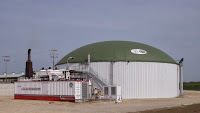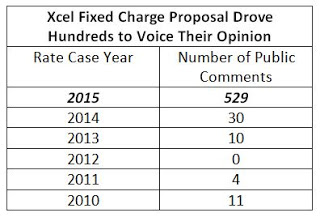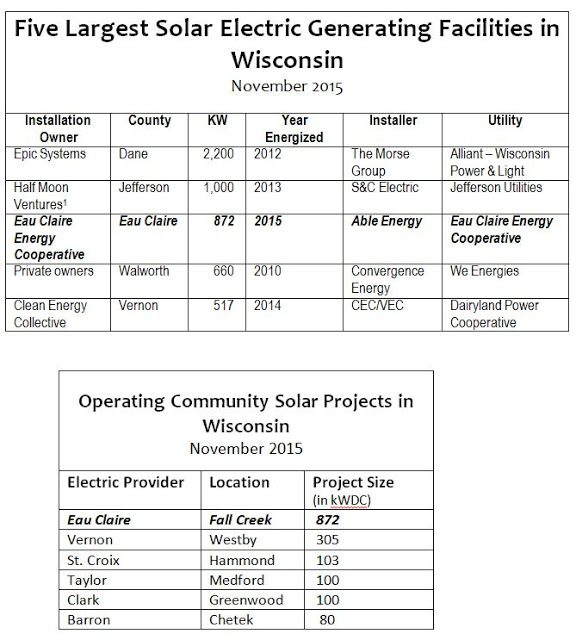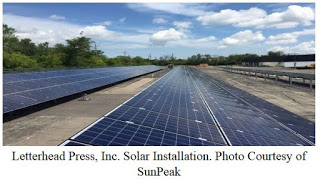
by jboullion | Jan 14, 2016 | Uncategorized
Immediate release
January 14, 2016
More information
Tyler Huebner, Executive Director
608.255.4044 x 1
tyler.huebner@renewwisconsin.org
Solar Power Hits the Big Time in Wisconsin
Newest Large Array Energizes Waukesha County Manufacturer
In yet another demonstration of solar energy’s growing appeal to commercial and industrial customers, Letterhead Press recently joined the growing roster of Wisconsin companies turning to the sun to power their operations.
Located in New Berlin, Letterhead Press now derives about 25% of the electricity consumed at its 120,000-square foot facility on Ryerson Road from a 300 kilowatt (AC) solar array. Situated on a parking lot behind the production facility, Letterhead’s array was the fourth largest solar system installed in Wisconsin last year (see table below), and is now the largest in Waukesha County.
The facility was dedicated Tuesday at an event organized by Letterhead Press and featuring remarks from Letterhead Press CEO Mike Graf, Lt. Governor Rebecca Kleefisch, Waukesha County Executive Paul Farrow, New Berlin Mayor Dave Ament, Sun Peak (the solar project developer and contractor), Focus on Energy, the Wisconsin Manufacturing Extension Partnership, Wisconsin Economic Development Corporation, and RENEW Wisconsin.
“2015 was a banner year for solar generation in the Badger State,” said RENEW Wisconsin’s Executive Director Tyler Huebner. “Growth was especially strong among larger customers looking to take advantage of solar power’s declining costs to help them control their escalating energy expenses.”
Solar was the fastest growing generation resource in Wisconsin in 2015, expanding from 18 megawatts (MW) at the beginning of the year to more than 25 MW at year’s end. Solar power expanded even more vigorously elsewhere in the United States, with 7,500 MW–the equivalent of Wisconsin’s increase 1,000 times over–coming on line last year.
In addition to being a cost-effective source of electricity for business and institutional customers, solar power supports a national industry that employs more than 208,000 people, according to the most recent solar jobs report conducted by The Solar Foundation. Solar industry employment grew 12 times faster than the overall U.S. workforce. About 1,900 solar jobs are located in Wisconsin, according to the previous year’s report.
Letterhead Press will be one of several dozen solar generation owners recognized at RENEW Wisconsin’s fifth annual Renewable Energy Policy Summit set for Thursday, January 21, 2016, at Monona Terrace in Madison. The theme of the event, “Shaping the Utility of the Future,” will delve into the rapidly changing electric utility environment and examine business models under which utilities and customers can work bring more clean energy into the Wisconsin energy mix.
For more information on the 2016 summit program agenda, speakers, and registration, please visit http://renewwisconsin.org/2016_Summit/
|
31 Largest Solar
Electric Systems Installed in Wisconsin in 2015
|
|
Customer
|
Location
|
Utility
|
Project Size (in kWDC)
|
Contractor (location)
|
|
Forest County Potawatomi
|
Crandon (15 locations), Milwaukee
|
WPS, We Energies
|
922
|
SunVest Solar
(Pewaukee)
|
|
Eau Claire Energy Cooperative
|
Fall Creek
|
ECEC
|
863
|
Able Energy (River Falls)
|
|
Central Storage Warehouse
|
Madison
|
Madison Gas & Electric
|
741
|
SunPeak
(Madison)
|
|
Letterhead Press
|
New Berlin
|
We Energies
|
337
|
SunPeak
|
|
Rockwell Automation
|
Mequon
|
We Energies
|
263
|
H&H Solar
(Madison)
|
|
River Falls Utilities
|
River Falls
|
RFU (muni)
|
250
|
H&H Solar
|
|
New Richmond Utilities
|
New Richmond
|
NRU (muni)
|
250
|
H&H Solar
|
|
Sisters of St. Agnes
|
Fond du Lac
|
Alliant-WPL
|
248
|
Eland Electric
(Green Bay)
|
|
Darlington School District
|
Darlington
|
Alliant-WPL
|
156
|
SunVest Solar
|
|
O&H Danish Bakery
|
Mt. Pleasant
|
We Energies
|
152
|
SunVest Solar
|
|
Crystal Ball Farms
|
Osceola
|
Xcel-NSPW
|
151
|
Next Energy Solution (Spooner)
|
|
Jewelers Mutual Insurance
Company
|
Neenah
|
We Energies
|
128.5
|
Energize, LLC (Winneconne)
|
|
Stieglitz Dairy
|
Greenwood
|
Clark Electric Cooperative
|
105.3
|
Next Energy Solution
|
|
Central Waters Brewery
|
Amherst
|
Alliant-WPL
|
100.8
|
North Wind RE (Stevens Point)
|
|
Blenker Building Systems
|
Amherst
|
Alliant-WPL
|
100.8
|
North Wind RE
|
|
Taylor Electric Cooperative
|
Medford
|
Taylor
|
100
|
10K Solar/ Viking Electric
|
|
Isthmus
Engineering
|
Madison
|
MG&E
|
99.5
|
H&H Solar
|
|
Precision Plus
|
Elkhorn
|
Elkhorn (muni)
|
99
|
Kettle View RE (Silver Creek)
|
|
Animart
|
Beaver Dam
|
Alliant-WPL
|
99
|
Kettle View RE
|
|
Organic Valley
|
Cashton
|
Cashton (muni)
|
95
|
Full Spectrum Solar (Madison)
|
|
Corrim Company
|
Oshkosh
|
WI Public Service
|
92
|
SunPeak
|
|
Components Company
|
Brookfield
|
We Energies
|
78
|
Convergence Energy (Lake Geneva)
|
|
Parmenter Circle Apts.
|
Middleton
|
MG&E
|
72
|
Full Spectrum Solar
|
|
Oregon Middle School
|
Oregon
|
Alliant
|
62
|
Full Spectrum Solar
|
|
Outpost Nat’l Foods
|
Mequon
|
We Energies
|
56.3
|
SunVest Solar
|
|
Evergreen Credit Union
|
Neenah
|
We Energies
|
56
|
Eland Electric
|
|
Clark Electric Cooperative
|
Greenwood
|
Clark Electric
|
53.3
|
10K Solar/ Viking Electric (MN)
|
|
Excel Patterns
|
Bonduel
|
We Energies
|
50.4
|
Eland Electric
|
|
Infinity Retail Services
|
Turtle Lake
|
Xcel-NSPW
|
50
|
Kettle View RE
|
|
Borah Teamwear
|
Coon Valley
|
Xcel-NSPW
|
49
|
Ethos Green Power (Viroqua)
|
|
Reynolds Storage and Transfer
|
Madison
|
MG&E
|
48
|
SunPeak
|
Prepared by: RENEW Wisconsin, January 2016
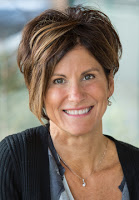
by jboullion | Jan 6, 2016 | Uncategorized
Immediate release
January 6, 2016
More information
Tyler Huebner
Executive Director
608.255.4044 x 1
tyler.huebner@renewwisconsin.org
Keynotes and Agenda Set for January 21st Renewable Energy Policy Summit
Event Aims to Shape the Utility of the Future
RENEW Wisconsin will host its fifth annual Renewable Energy Policy Summit on Thursday, January 21, 2016, at Monona Terrace in Madison. The theme of the event, “Shaping the Utility of the Future,” will delve into the rapidly changing electric utility environment and examine business models under which utilities and customers can bring more clean energy into the Wisconsin energy mix.
The event will feature two excellent keynote speakers:
Mary Powell, President and Chief Executive Officer for Vermont-based Green Mountain Power (GMP) corporation, an investor-owned utility. As CEO of this utility, Mary initiated and implemented a strategic and comprehensive restructuring of GMP to provide low carbon, low cost, and reliable power to its customers. GMP is the first utility in the world to become a member of B Corp, showing a commitment to use energy as a
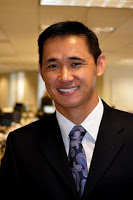 force for good.
force for good.
James Tong, Vice President of Strategy and Government Affairs at Spruce Finance, where he leads industry-wide efforts to accelerate deployment of solar energy. He has helped popularize the idea of “grid neutrality” and is a recognized expert on utility integration of distributed energy resources.
After the opening keynote, three panelists representing Wisconsin electric providers and suppliers will offer their insights into the opportunities and challenges for expanding clean energy development in Wisconsin. The panel will feature:
– Deb Erwin, Regulatory Policy Manager, Xcel Energy (WI)
– Brian Rude, Vice President of External and Member Relations, Dairyland Power Cooperative
– Kevin Westhuis, Utility Director, River Falls Utilities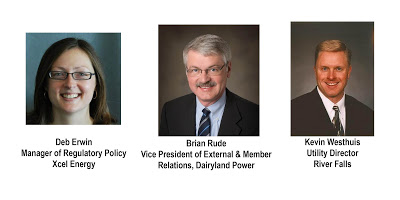
 The panel will be moderated by Eric Callisto, a Partner with the law firm of Michael Best and Friedrich LLP, and former Commissioner on the Public Service Commission of Wisconsin.
The panel will be moderated by Eric Callisto, a Partner with the law firm of Michael Best and Friedrich LLP, and former Commissioner on the Public Service Commission of Wisconsin.
Between lunch and the afternoon keynote, RENEW will recognize the most noteworthy clean energy installations built in 2015.
Titled “Driving Markets,” the afternoon panel will feature four representatives of renewable energy industries active in Wisconsin.
– Steve Dvorak, president, DVO, Inc. a biogas digester firm (Chilton)
– Adam Gusse, vice president, H&H Solar (Madison)
– Amy Heart, senior manager, public policy, Sunrun, Inc. (Milwaukee)
– Chris Kunkle, Regional Policy Manager, Wind on the Wires (St. Paul, MN)
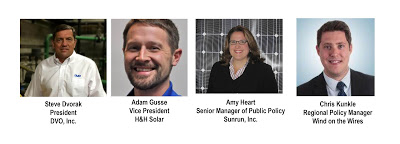
 The panel will be moderated by Susan Crawford, attorney with Cullen Weston Pines & Bach, and a member of RENEW’s Board of Directors.
The panel will be moderated by Susan Crawford, attorney with Cullen Weston Pines & Bach, and a member of RENEW’s Board of Directors.
RENEW Wisconsin’s Executive Director Tyler Huebner says, “We chose this year’s theme to re-start the conversation on the direction of Wisconsin utilities and clean energy. Wisconsinites want more homegrown, renewable energy and our utilities can be winners from the transition, if they can adapt to the technological innovation and evolving customer interests taking place around them. We’re bringing in two of the best leaders in the country as our keynote speakers to explain this transition: Mary Powell, who as a utility CEO is about 5 years into this evolution at Green Mountain Power, and James Tong, who is a thought leader on how the electric grid itself may need to evolve to enable a more widespread, distributed power future.”
Registration rates are $115 for members of RENEW Wisconsin and $145 for non-members. The rate for government employees is $85 and for students is $35. Membership with RENEW starts at $35 for individuals and $200 for businesses and organizations.
For more information on the 2016 program agenda, speakers, and registration, please visit
http://renewwisconsin.org/2016_Summit/
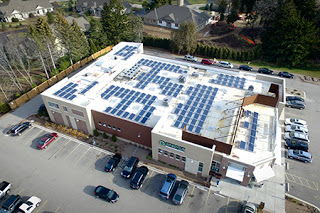
by jboullion | Dec 29, 2015 | Uncategorized
Overview: As 2015 winds down, it is abundantly clear that solar energy is on a roll in Wisconsin.
 |
| Outpost Foods in Mequon Solar Installation |
The current year is ending with a flurry of installations and 2016 will start out on a similarly strong footing. The appeal of solar photovoltaic (PV) technology has never been as broad as it is now, stretching from the smallest of residential customers to farms and faith communities and beyond to manufacturers and even some utilities. Declining out-of-pocket installation costs now make solar-generated electricity an affordable energy option for all property owners with good solar exposure.
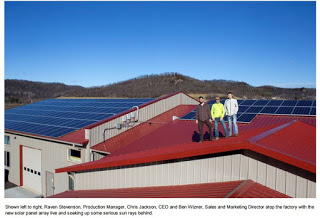 |
| Borah Teamwear in Coon Valley Solar Installation |
As a result, growing numbers of Wisconsin electricity customers are taking steps to lock in the savings from solar today for their homes and businesses.
This trend begs two questions: what trends and policies are driving the solar energy market right now and how long will this dynamic continue? Going into December, the 30% solar Investment Tax Credit (ITC) had 13 months to go before expiring at the end of next year. In a surprise development, Congress passed a spending bill containing provisions to extend the solar ITC through 2021. On the same day that spending bill cleared Congress (Dec. 18, 2015), President Obama signed it into law. Thanks to this unexpected but very welcome action, the ITC will remain at 30% through the end of 2019, and then decline to 26% in 2020 and to 22% in 2021.
(For more complete information on the renewable energy tax credit landscape going forward, visit the links below:
http://www.bloomberg.com/news/articles/2015-12-28/these-will-be-wall-street-s-most-in-demand-positions-next-year
https://cleantechnica.com/2015/12/20/boom-times-ahead-us-clean-power-thanks-oil-lobby/)
Here in Wisconsin, financial support for solar installations is poised to transition away from cash incentives to loans. In 2016 the transition will begin first with prospective commercial solar hosts.
Policy and Market Drivers: The most significant factors propelling solar installation activity through 2015 are outlined below.
– Declining cost of hardware. Installed costs continued falling through 2015, driven mostly by lower module and inverter prices. That trend should continue in 2016 and beyond.
– A 30% Investment Tax Credit (ITC) and accelerated depreciation provisions for new solar energy systems owned by taxpaying entities. These incentives will remain in place through 2021.
– USDA’s Rural Energy for America Program, which offers grants and loan guarantees to qualifying rural businesses up to 25% of a PV system’s installed cost. The next deadline for applications is February 1, 2016. Approximately $50 million is available.
– Focus on Energy, Wisconsin’s ratepayer-funded energy efficiency and renewable energy program. About $5 million in cash rebates were issued in 2015.
Outlook: Rebates up to $2,400 for PV systems serving residential and small commercial customers will continue in 2016. However, the state has no plans at this time to offer cash incentives to commercial and industrial PV system owners in 2016. Instead, Focus on Energy will make available $2,500,000 in low-interest loans beginning in 2016, and will inject the same amount into the forthcoming revolving loan program in 2017 and 2018. Cash rebates for any sector beyond 2016 will hinge on a Public Service Commission decision likely to occur in mid-2016.
Bottom line: Notwithstanding the uncertainties created by Focus on Energy program changes, Wisconsin’s solar market should see solid growth through the end of the decade.
Prepared by RENEW Wisconsin, December 2015
by jboullion | Dec 22, 2015 | Uncategorized
The following appeared on Samantha Williams’ blog appearing on National Resource Defense Council’s Switchboard page. It is an excellent summary of this year’s utility rate cases nationwide and the “trend” of increasing mandatory monthly customer charges on residential electric customers. As she notes below, the tide is turning, even in Wisconsin.
“Even the Wisconsin Commission, the outlier in this discussion, is taking notice,” Williams writes. “In a relative shift from their 2014 decisions, just a few weeks ago commissioners scaled back a fixed fee request from Wisconsin Public Service Corporation and ordered a study.”
The Year in Utility Rate Cases: Mandatory Fee Hikes Retreat as Consumer Voices Pick up Steam
Posted December 17, 2015
Part of NRDC’s Year-End Series Reviewing 2015 Energy Developments
This was a banner year for public push-back on utility proposals across the country that sought to dramatically change how customers are billed for their electricity.
Had the dozens of proposals this year succeeded, many homeowners and businesses would have been shackled with higher upfront fees, before they even turned on the lights. Thankfully, this was also a banner year for prudent, forward-thinking utility commissioners; nearly three-quarters of the orders issued in 2015 either rejected outright higher fixed fees or modified them to be smaller, incremental increases.
But what do these fees mean for consumers and the environment, and why should we build on the success of 2015 and continue to fight in 2016?
Imagine you’re an average single family homeowner. Over the past few years, you’ve tried to “go green” and save money by participating in energy efficiency programs available through your utility. You had new insulation blown into your attic, you caulked your windows and doors, you upgraded to a more efficient refrigerator and washer and dryer.
The savings have started to roll in every month as you see your energy use go down. You’re wasting less energy, cutting your bills, and doing your part to help the environment by conserving energy and lowering emissions.
You’re happy you made these decisions.
Until one day you get a notice in the mail that your utility is increasing the “customer” or “fixed” portion of your bill. This increase is significant, from a current $10 per month to $20. And you notice the difference right away once the fees go into effect: the savings you previously enjoyed from your efficiency investments are seriously diminished, your bills noticeably higher. It’s getting to the point where you’re having a hard time even affording them.
You talk to your neighbor, who has a much larger house that consumes far more energy and you learn that she hasn’t made any of the improvements you have. Yet, somehow, with the new rates in effect, your neighbor is now paying less than she used to, while you are paying more.
How can this be?!?
Mandatory Fixed Fees: The Impacts
It’s really a question of control, costs, and conservation.
Control – When a utility increases its fixed costs, at the same time it typically decreases the variable per/kWh charge that goes up and down as customers change their energy use. This variable charge is the only portion of the bill that customers have the ability to control. Removing this ability disempowers customers, leaving them with fewer options to cut their bills.
Costs – Higher mandatory fees also force higher costs disproportionately onto the people who use the least electricity. The result? Those who consume less energy end up paying more, while the energy hogs get a break on their electric bills.
Conservation – As if this wasn’t enough, these proposals are like kryptonite for clean energy. They remove the incentive for people to conserve energy, lengthening payback periods on energy efficient appliances and solar panels alike. Adding to this dynamic, lower per/kWh charges implicitly tell consumers: We’ll reward you for using more energy, and penalize you for using less.
The Fixed Fee Trend: Waxing and Waning
One of the main drivers of these proposals is the utility desire to shore up their ability to cover costs in the face of a rapidly changing national energy landscape.
This desire is not surprising. Utilities provide a valuable service of ensuring that people have access to reliable electric services, and as we work to modernize the grid and move away from the polluting fossil sources of the last century, it will be critical that–just like any other business–they can recover their reasonable costs of incorporating cleaner energy into the system.
But what is surprising is just how aggressively the industry has pursued the fixed charge approach in particular. Unfortunately, these kinds of rate restructuring proposals have been commonplace over the last few years. In 2015 alone, requests were pending in at least 24 states.

2015 was notable for another reason, though: the unprecedented degree of public opposition to these proposals. Coordinated campaigns waged by the consumer, local government, environmental and solar communities have truly shifted the conversation. NRDC is proud to stand alongside AARP, National Consumer Law Center, NAACP, Vote Solar and many others in this battle.
Thankfully, just as the unfortunate fixed charge “trend” started to gain attention, regulators began responding to the public outcry by holding the line. The industry also appears to be reconsidering, in some states seeking other options to address the rapidly changing energy landscape.
The advocacy community doesn’t always win, but this year–more often than not–we did.
The starting gun for this now-highly visible national effort went off in Wisconsin in the fall of 2014, when the state’s three major investor-owned utilities proposed dramatic rate restructuring, including doubling of fixed charges to the tune of $20 per month. That amount remains–to this day–an outlier for residential fixed charges for regulated electric utilities nationwide. And people were certainly paying attention. Hundreds of customers packed hearing rooms from Milwaukee to Madison. Meanwhile, a diverse group of interveners–including homeowners, clean energy advocates, environmental groups, elected officials, local businesses, local and national consumer groups, along with local sports figures and representatives of the “green Tea Party” movement–demanded the utility go back to the drawing board.
This trend of public engagement caught on in 2015, from New York to California, Missouri to Kentucky.
And while the commissioners in the 2014 Wisconsin cases unfortunately declined to answer the call of hundreds of local voices, they were largely alone. In 2015 far more recognized the detrimental impact of fixed fee increases on homeowners in their states. In Minnesota, for example, the commission rejected Xcel’s fixed fee proposal because that it would “place too little emphasis on the need to set rates to encourage conservation.” In the Ameren Missouri case, the commission left the monthly charge unchanged, making clear that customers “should have as much control over the amount of their bills as possible so that they can reduce their monthly expenses by using less power, either for economic reasons or because of a general desire to conserve energy.” The list of prudent commission decisions goes on and on.
The national media also took notice. Consumer Reports prominently covered fixed fee proposals from the perspective of rates and affordability, as did the Wall Street Journal.
The growing visibility of the issue came to a head at this year’s annual meeting of the National Association of Regulatory Utility Commissioners (NARUC). Compared with the 2014 meeting (which had only one panel on the issue, relegated to a Sunday subcommittee), in 2015 rate design, fixed charges, and the pressing need for smarter, more inclusive approaches dominated the conversation. A provocative new report was also released at the meeting that put an additional nail in the fixed fee coffin. The sustainable business group, Ceres, released “Pathways to a 21st Century Utility” authored by Peter Kind who had previously recommended in a 2013 Edison Electric Institute (EEI) paper (“Disruptive Challenges”) that utilities address revenue erosion with fixed fee hikes. But now, two years later, Mr. Kind has profoundly reversed course and recommends that utilities shift away from this approach and toward innovative rate designs that accommodate the changing electric grid.
As Utility Dive quipped, “as quickly as fixed charges came into vogue, they now appear to be on the way out.”
As we near the end of 2015, more signs abound that the fixed fee trend is losing ground. Even the Wisconsin commission, the outlier in this discussion, is taking notice. In a relative shift from their 2014 decisions, just a few weeks ago commissioners scaled back a fixed fee request from Wisconsin Public Service Corporation and ordered a study on their impacts on consumers. Building on a foundation that includes a joint statement between NRDC and EEI last year, the utility trade organization has also expressed interest in working with the environmental and consumer communities and discussing alternative rate designs that can command broad agreement. NRDC and others are exploring decoupling (which as of this year is being implemented in over half the states), minimum bills, and well-designed time of use rates with appropriate customer protections.
What Comes Next? 2016 and Beyond
There can be no doubt: 2015 was a wildly successful year for pushback on these regressive rate proposals.
But our work isn’t done.
While the national conversation is shifting away from fixed fees to other rate structures, state-level utility proposals to increase these fees are still coming. We’ll continue to fight in 2016 to ensure they don’t gain traction and to encourage commissioners to demand more innovative solutions from the utilities they regulate.
As for utilities, we challenge the industry to choose a better path. There are smarter ways to modernize and keep pace with transitions in the energy marketplace. Let’s work together to design 21st century electric rates that focus on affordability, efficiency and expanding access to the kinds of clean, renewable energy that people are demanding.
We think 2016 will be another banner year.
by jboullion | Dec 3, 2015 | Uncategorized
For immediate release
December 3, 2015
More Information
Tyler Huebner, Executive Director
RENEW Wisconsin Statement on Public Service Commission Approving $14 Monthly Fixed Charge for Xcel Energy
In today’s open meeting, the Public Service Commission approved a hike in monthly mandatory fixed charges for residential customers of Xcel Energy in Wisconsin, from $8 per month (today) to $14 per month starting next year, a 75% increase. The company had been seeking an $18 monthly charge.
“Although we are happy that Xcel Energy customers will not face the full $18 monthly charge, this is still a 75% increase in mandatory fixed charges that is exceptionally higher than what utilities in other states are being granted by state regulators,” said Tyler Huebner, Executive Director of RENEW Wisconsin. “Over 500 individuals and organizations made their voices heard opposing this change, and their efforts helped educate the Commissioners about the impacts this change will have on their lives.”
RENEW Wisconsin conducted analysis of fixed charge requests by similar utilities throughout the country in 2014 and 2015. Of 35 proposals identified:
– 14 were rejected entirely, including Xcel’s Minnesota operation which requested an increase from $8 to just $9.25 earlier in 2015
– 18 utilities were granted increases below $4.30, with an average hike of $2.13.
– Only 3 were granted higher increases, all in Wisconsin. Today’s decision adds a fourth.
“Rate designs with a high fixed charge punish those customers who can least afford to pay more for their electricity. They take away the ability to control one’s utility bills, and they make it harder for customers to save money through conservation measures and more efficient appliances. This is at bottom an issue of consumer fairness,” said Huebner.
For more analysis of this issue, please visit http://midwestenergynews.com/2015/12/04/wisconsin-regulators-approves-another-fixed-charge-increase/

by jboullion | Nov 24, 2015 | Uncategorized
For immediate release
November 24, 2015
More Information
Tyler Huebner, Executive Director
608.255.4044
tyler.huebner@renewwisconsin.org
Madison Community Foundation Supports New RENEW Wisconsin Endowment for an Energy Analysis and Policy Student Intern

RENEW Wisconsin (RENEW) has been awarded a 33% cost sharing grant of $34,000 from the Madison Community Foundation. The grant will fund a
perpetual endowment to support a UW-Madison Energy Analysis and Policy
(EAP) student intern working at RENEW.
“This grant is a perfect match between RENEW and the UW-Madison’s EAP program supporting RENEW’s renewable energy policy research. The Madison Community Foundation support allows us to permanently hire an impassioned student from one of the top energy graduate programs in the country to analyze policies that will spur the use of clean renewable energy in Wisconsin,” said Tyler Huebner, RENEW’s executive director.
RENEW has a history of hiring EAP student interns who have worked on cutting edge renewable policy issues such as third party financing, utility rate cases, community solar, and more.
Don Wichert, a major donor to the endowment, RENEW Board Member, and 1987 graduate of the EAP program, praised the Madison Community Foundation in supporting this permanent support of the EAP program. “This grant will help RENEW leverage other EAP alumni and RENEW member support setting up a great opportunity to work together for RENEW and the EAP program. This program will allow the EAP program to recruit the top students in the country to work on cutting edge renewable policy issues with RENEW,” said Wichert.
“This project furthers two of the Madison Community Foundation’s key goals – to help steward the environment and to inspire philanthropy. RENEW Wisconsin’s endowment campaign will create a sustainable fund to attract bright students and help them develop real world experience through critical analytical and policy analysis. It is a perfect way to celebrate RENEW’s 25th anniversary and enrich their environmental programming,” said Tom Linfield, Madison Community Foundation Vice President of Community Impact.
—–End—-
RENEW Wisconsin leads and accelerates the transformation to Wisconsin’s renewable energy future through advocacy, education, and collaboration.
Madison Community Foundation uses its local knowledge and assets to inspire giving, support meaningful initiatives, and connect people for the common good. Since 1942, foundation staff have helped people realize their philanthropic goals, allowing them to support charitable interested anywhere in the world. The community foundation also awards grants throughout Dane County to build communities. More information is available online at www.madison comunityfoundation.org.
by jboullion | Nov 19, 2015 | Uncategorized
For immediate release
November 19, 2015
More Information
Tyler Huebner, Executive Director
608.255.4044
tyler.huebner@renewwisconsin.org
Public Service Commission Sharply Trims WPS’ Fixed Charge Request
State regulatory agency grants Wisconsin Public Service only a $2 monthly increase instead of the $6 requested
In today’s open meeting, the Public Service Commission sharply trimmed Green Bay-based Wisconsin Public Service’s request to increase monthly mandatory charges on small electricity customers from $19 to $25. Instead, the Commission settled on a $2/month increase, to $21/month, while agreeing to study the issue in greater depth.
One year earlier, the Commission approved a request from WPS to hike its mandatory fixed charge from $10.40 to $19 per month for residential and other small customers.
Commissioners Phil Montgomery and Mike Huebsch initially signaled interest in granting no increase at all. A compromise was reached with Chairperson Ellen Nowak to increase the fixed charge by $2 per month, to $21, a 10% increase.
“We are pleased that the Commission has slowed down and granted a much smaller fixed charge increase than what WPS had requested,” said Tyler Huebner, RENEW Wisconsin’s Executive Director. “This sends a signal that the Commission is responding to customers who have expressed a wide variety of concerns about these high fixed charges. In fact, 368 people voiced their opinion publicly and none supported higher fixed charges. We hope the analysis that’s conducted by the Commission leads to a broader discussion of how to design rates in a way that leads us towards an energy future that benefits all of Wisconsin.”
“Rate designs with high fixed charges punish those customers who can least afford to pay more for their electricity. They take away the ability to control one’s utility bills, and they make it harder for customers to save money through conservation measures and more efficient appliances. This is at bottom an issue of consumer fairness, and many more consumers than usual spoke up,” said Huebner.
In the rate case, RENEW presented research demonstrating that regulators in other states were not supportive of utility requests to hike fixed charges.
See more at: http://www.renewwisconsin-blog.org/2015/10/robin-hood-in-reverse-is-back-wps.html
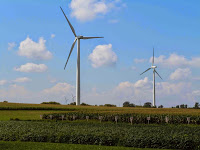
by jboullion | Nov 18, 2015 | Uncategorized
Today, Madison Gas & Electric announced a framework that includes expanding the company’s investment in renewable energy to meet 30% of their electricity needs by the year 2030.
In addition, the company indicates a plan to give customers more control, and continue to engage the customers and communities they serve going forward.
 “This new framework is a good step forward for Madison Gas & Electric Company and for the communities they serve. MG&E’s goals of providing 25% renewable energy by 2025 and 30% by 2030 are achievable,” said Tyler Huebner, Executive Director of RENEW Wisconsin.
“This new framework is a good step forward for Madison Gas & Electric Company and for the communities they serve. MG&E’s goals of providing 25% renewable energy by 2025 and 30% by 2030 are achievable,” said Tyler Huebner, Executive Director of RENEW Wisconsin.
“We agree that ongoing collaboration will be needed to identify the best ways to meet the goals of this new framework. Ensuring customer opportunities to invest in renewable energy and energy efficiency, and incorporating equity, fairness, and control over
customer bills, should continue to be part of the conversation and collaboration going forward.”
MGE has made more information available at mge.com/Energy2030.
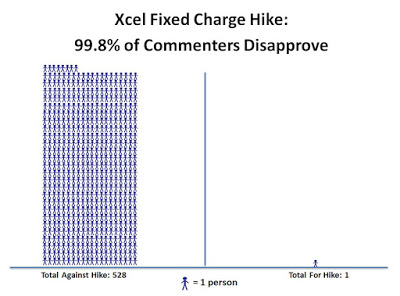
by jboullion | Nov 18, 2015 | Uncategorized
November 18, 2015
More Information
Tyler Huebner, Executive Director
608.255.4044
tyler.huebner@renewwisconsin.org
Record Number of Xcel Energy’s Wisconsin Customers Voice Opposition to Hike in Mandatory Fixed Charge
 99.8% of public commenters (528 out of 529) dislike the fee hike from $8 to $18 per month
99.8% of public commenters (528 out of 529) dislike the fee hike from $8 to $18 per month
Xcel Fixed Charge Proposal Drove Hundreds to Voice Their Opinion
The final tally is in, and it is clear that Xcel Energy’s Wisconsin affiliate, based in Eau Claire, has proposed an incredibly unpopular change in how it wishes to bill customers going forward.
Following the footsteps of other Wisconsin utilities, Xcel’s Wisconsin utility has proposed to raise its monthly “fixed charge,” which every residential and small business
customer pays before using any electricity at all, from $8 to $18 per
month.
In total, 529 public comments were filed, a seventeen-fold increase in public participation over any Xcel rate case in the previous five years. RENEW Wisconsin’s review shows that 528 (all but one commenter) disapproved of Xcel’s proposed hike in fixed charges.
“It is clear that Xcel’s customers overwhelmingly oppose this hike in mandatory fixed charges. These high fixed charges are a Robin Hood in reverse scheme: the lowest users of electricity end up paying substantially more, while high users of electricity see dollar savings,” said Tyler Huebner, RENEW Wisconsin’s Executive Director.
Public comments were made through the Public Service Commission’s online system, in person at the public hearing on September 16th in Menomonie, or through written mail.
In the public comments, a wide variety of concerns were aired. Senior citizens, fixed-income, and low-income advocates worry that they will have to choose between paying for electricity, food, or medicine. Energy conservation and renewable energy advocates oppose paying high unavoidable fees while seeing the variable energy rate decrease, making the payback longer than it should be for energy- and money-saving investments.
These perspectives can be seen from the selection of public comments included below:
“I am a senior and living on a rigidly fixed income and will not be able to survive in my home if utility costs continue to inflate.” — Cynthia Martinson, Washburn WI
“While the rest of the Country is moving forward, promoting clean energy, Wisconsin utilities are moving us backwards with proposals that undermine clean energy and energy efficiency. If approved, Xcel’s mandatory fixed charge would increase to $18 per month, up from $8 today–a 125% increase, and Xcel’s Wisconsin customers would be facing much higher bills than their neighbors in Minnesota.” — League of Women Voters of Ashland & Bayfield Counties
“I find it outrageous that in every bill from Xcel there is an insert with information on how to reduce my electricity use so that I can “save” money but at the same time, the mandatory fixed charge will be increased–probably to make up for any money Xcel loses by my conservation efforts.” –Judy Blackstone, Eau Claire
“As an Xcel Energy shareholder, I urge the Public Service Commission NOT to approve the proposed 125% mandatory fixed charge rate increase. This steep, unfair and unnecessary increase will be too much to bear for the poorest and most vulnerable among us; those with low incomes and the elderly.” -Dan Stickler, Eau Claire
“Where is that extra $10.00 going to come from? It will come from the food budget- people will go hungry one more night per week; it will come from the medication budget- people who take prescriptions will cut pills in half, or take the medications every other day.” -Joanne Rudrud, Altoona
“I am thankful the MN Public Service Commission rejected the 19% increase here, and implore the WI Public Service Commission to reject the 125% increase across the border.” –Debra Bourne, Minneapolis
“The fixed charge increase XCEL is asking for is unwarranted, totally against the utilities’ best interests, [and] extremely unfair to the public.”– William E. Bastian, La Crosse
“Currently 41% of all student enrolled in our schools are using free or reduced lunch. Some schools, like Longfellow Elementary, are as high as 74%. These are the people who are going to be hit the most by any increase in rates. Keep in mind, these are just household using the assistance, it doesn`t count households living with financial difficulty who choose, for whatever reason, not to take the assistance.” -Chue Xiong, Eau Claire School Board Commissioner.
Previous RENEW Wisconsin analysis also shows that Wisconsin is an outlier on this issue: no other state has approved such dramatic hikes in monthly fixed charges. Learn more at http://www.renewwisconsin-blog.org/2015/10/robin-hood-in-reverse-is-back-wps.html.
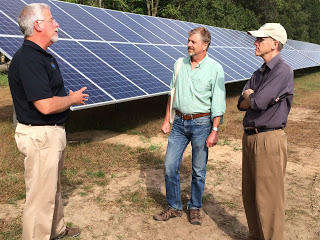
by jboullion | Nov 17, 2015 | Community Solar, Solar, Uncategorized
With the flip of a switch, Fall Creek-based Eau Claire Energy Cooperative (ECEC) now owns and operates Wisconsin’s newest and largest Community Solar project. Consisting of 2,816 panels with a rated capacity of 872 kilowatts (DC), the array will produce approximately 900,000 kilowatt-hours a year, roughly the equivalent of what 90 households would consume in a year.
For the moment at least, it is the third largest solar array in Wisconsin (see table below).
River Falls-based Able Energy Company constructed ECEC’s system. Later this year, Able will commence construction on a 250 kW solar array in Minnesota for People’s Energy Cooperative.
“Eau Claire Energy’s project makes a statement on solar energy that couldn’t be clearer,” said Tyler Huebner, executive director of RENEW Wisconsin, a renewable energy advocacy organization headquartered in Madison. “If you’re searching for a utility project that delivers clean energy and long-term savings to its subscribers while creating good-paying jobs with in-state businesses, you’ll find an excellent example in Fall Creek.”
“Solar energy is here to stay and we encourage other electric providers to embrace that reality,” Huebner said.
Under a typical community solar project, electricity customers help finance the building of a large project through an up-front subscription fee that is paid back in full (with a modest return) through monthly on-bill credits. A centralized solar array enables all utility customers, including those who rent or are lacking sufficient solar exposure, to support the expansion of solar generation in their community.
Since early 2014, six Wisconsin electric cooperatives have built and energized solar gardens totaling more than 1.5 MW (see table below). For information on community solar activity in Wisconsin, visit RENEW’s web page at http://renewwisconsin.org/action/CommunitySolar.htm.














